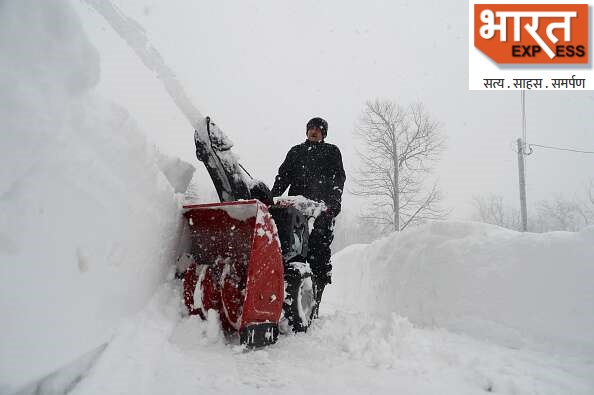
US Weather Update
US WEATHER UPDATE: In the Buffalo, New York, county—which receives an average of around 95 inches of snow each year—there have been at least 60 fatalities as a result of a blizzard.
What should have been done differently given the high death toll?
HERE ARE 3 REASONS WHY THE STROM WAS SO DEADLY.
Authorities May Have Delayed Too Long To Impose A Travel Restriction.
The county didn’t ban road travel until shortly before the storm hit, according to reporting by the media. The ban was issued around 9:30 a.m. on Friday. Many people were already enroute to work, determined to get their paychecks ahead of the holiday weekend. A lot of people reportedly died outside or stuck in their cars.
Some observers have also pointed to insufficient emergency resources, such as staffing challenges, funding cuts and outdated equipment.
In a news conference Wednesday, Erie County Executive Mark C. Poloncarz criticized the city’s response to the blizzard, calling it “embarrassing.”
The Federal Energy Regulatory Commission is conducting a joint inquiry with North American Reliability Corporation, an Atlanta-based energy compliance nonprofit, investigating the blackouts that affected millions of American households as part of the recent winter storm.
Hurricane-force winds create deadly conditions
It was anticipated that the blizzard would occur, and it did. Since at least 1950, Buffalo has not had a storm this deadly. It was “the worst snowstorm I have ever covered,” according to seasoned meteorologist and storm chaser Reed Timmer.
The storm’s destructiveness was partly caused by the ferocious mix of snow, wind, and chilly temperatures, as well as by the fact that circumstances swiftly became worse.
Six minutes after the county’s travel ban was put into force, wind gusts of up to 79 miles per hour were observed in the region. Thousands of people had already lost electricity by that point.
Poloncarz described the snow as “paralysing” on Wednesday.” He declared, “This was a tremendous snowstorm, perhaps the Category Five of blizzards.” It was “hurricane-force winds for a full day with scant visibility
Buffalo, one of the snowiest cities in the nation, is accustomed to harsh winters. Residents and authorities there are used to them and may even be inured to them. On Tuesday, Erie County Sheriff John Garcia admitted that the storm’s threat had been overestimated by government officials.
Also Read: Blizzard Of The Century In US, Kills Almost 60
People Weren’t Prepared And Infrastructure Is Aging
Buffalo is one of the poorest cities in the nation. Many citizens lack the facilities and infrastructure required to endure such a devastation storm. In the meanwhile, financing for public amenities has been unequal, and weak power networks have caused widespread days-long power outages.
The number of fatalities from the storm may have been exacerbated by aged infrastructure, according to Mark Wysocki, a New York State climatologist and meteorologist at Cornell University. For instance, people may have left their homes due to defective electricity only to be caught unprepared in a whiteout.
Wysocki emphasised the need of keeping hoses, blankets, and flashlights in the car throughout the cold. To prevent carbon monoxide poisoning, people who are trapped should drive their automobiles sometimes but not continually, he said.
Governor Kathy Hochul issued a State of Emergency for the whole state on Thursday evening before the storm arrived , and it is still in effect today looking at the US Weather Update.
US Weather Update: Did the environment play a part?
According to experts, climate change is a factor in the increasing intensity of extreme weather occurrences like the snowstorm in Buffalo. Here are some further notable snowfalls in the region:
50 inches of snow fell on a single day in January 1966, totaling 103 inches over four and a half days.
During the January 1977 snowstorm, there was a five-day snowfall of up to 100 inches and 69 mph wind gusts.
127 inches of snow fell over six days in December 2001.
141 inches of snow fell in more than 10 days in February 2007
To read more such news, download Bharat Express news apps





















